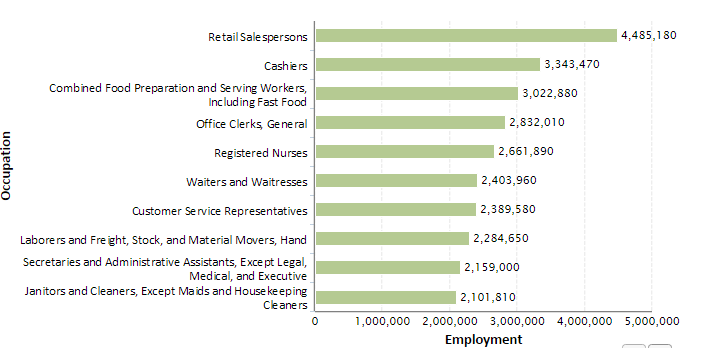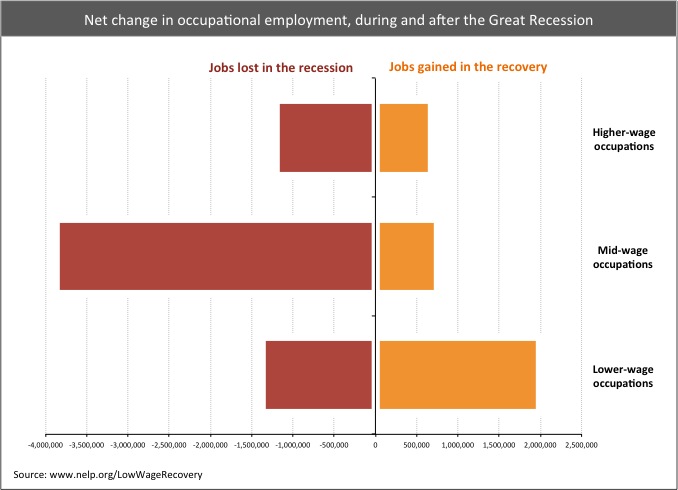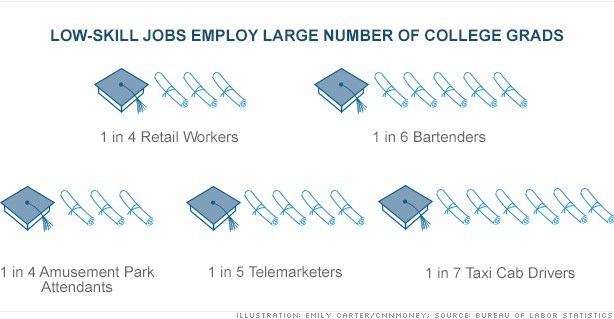There are a few theories as to why this trend is happening. First, we have outsourced a large part of our manufacturing labor force to places like China. It is simply too hard to compete in places where they have no worker’s protections or rights. So it is no surprise then that the service sector that requires physical people to be present is growing and representing a larger source of our employment work force.
Can you live on $10 an hour and raise a family? Millions of families do and this is why dollar stores are so prolific around the nation. You don’t see them advertising on television or getting any glamor spot in trendy magazines but they plaster the heartland. First, let us look at the top four employment fields:

Source: BLS
This is interesting. The number one employment field in the US is
retail salesperson with 4.4 million people working in this sector.
Then, you have cashiers with 3.3 million working in this field. Food
servers and food preparation workers comes in third with 3 million
workers. Finally you have office clerks coming in fourth with 2.8
million workers. In fact, the only job out of the top 10 that pays a
living wage is that of registered nurses. Of course this requires going
to college and that road is becoming more expensive by the day.Is this trend getting better? Not really if we look at net jobs gained and lost since the recession hit:

Here is an interesting look. You’ll notice the
massive number of mid-wage jobs that were lost and simply never came
back. The bulk of job growth since the recession ended has come in the
form of low wage jobs. This is a graphic representation of the middle
class disappearing. You will find that many college graduates are
working in low wage jobs:

1 out of 4 retail and amusement park workers have a college degree. 1 in 6 bartenders has a college degree. And you wonder why so many Americans are having a tough time paying back their college debt. Of course this is for people that are working. Many young Americans are working part-time or not working at all in our massive “not in the labor force” category that is ignored.
Where does this all go? It is hard to say. We live in an interconnected global economy. You see how a tiny country like Greece can shake up global markets. China’s correcting stock and real estate market will have an impact here in the US. With the global correction, you see how the US dollar is getting strong as a safe haven. Which means our exports will get more expensive relative to other countries. Which means it will be tougher for our goods to compete in a global landscape. Cheap products here filling up Wal-Marts and dollar stores but more uncertainty when it comes to wage stability. This seems to be a global trend.
No comments:
Post a Comment